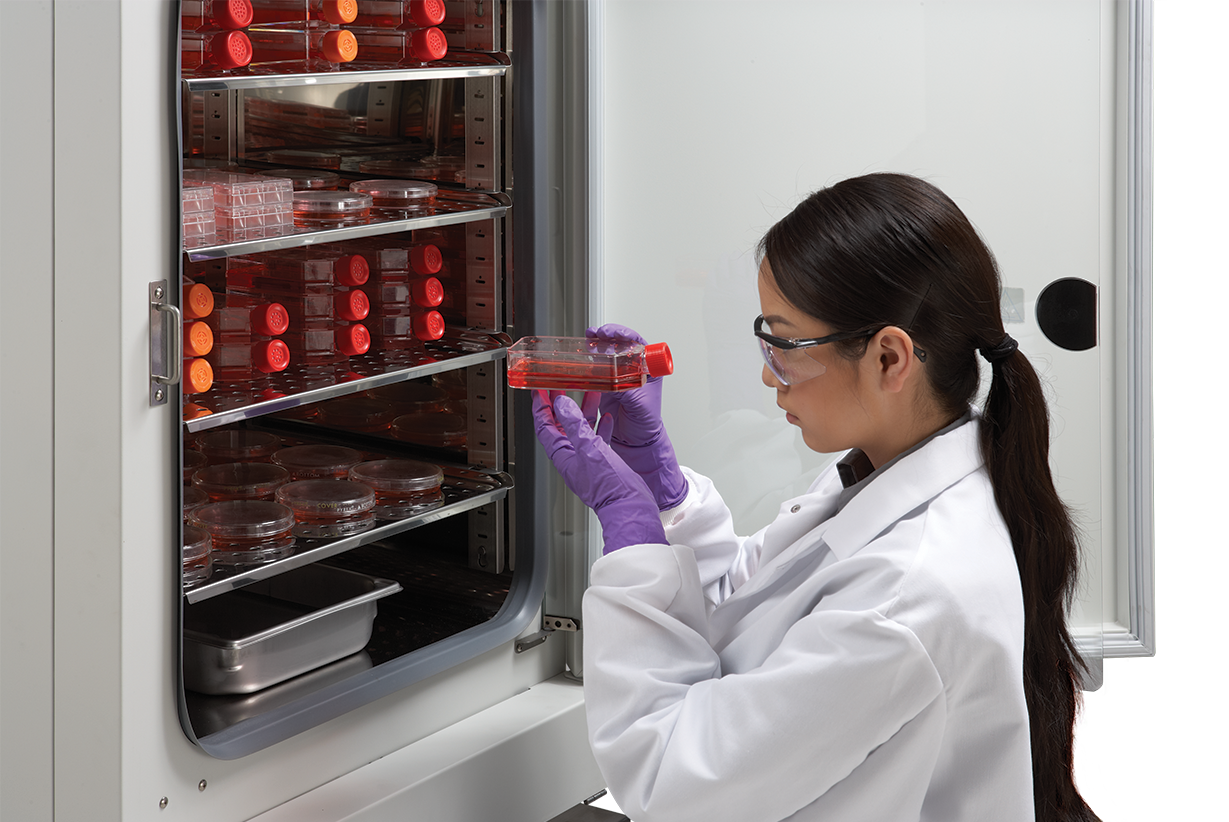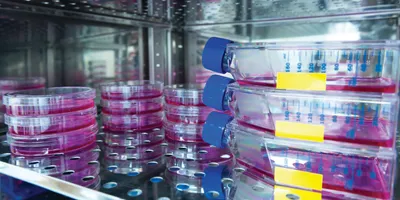Avery sighed as she opened the CO2 incubator door. Just last week, her team noticed that several cell culture plates were drying out—an issue they thought they could fix by refilling the water pan more frequently. But now, she was faced with even more problems: several culture plates were turning a disconcerting shade of yellow, and condensation was beginning to drip down the inner door. Instead of stabilizing the humidity, their efforts only led to excess moisture, creating the perfect breeding ground for contaminants. It seemed like everything was going wrong.
She knew this wasn’t just a random occurrence. Their incubator’s inability to maintain stable humidity, temperature, and CO2 levels was becoming a serious problem. Each time the door was opened, the incubator struggled to recover, leaving their cells vulnerable. If these issues weren’t addressed soon, the lab risked more than just wasted time and resources. It was time for a change.
CO2 incubators are essential in cell culture research, however, labs like Avery’s face daily challenges that can undermine their operations. Contamination poses a persistent threat, capable of derailing weeks or even months of work. Meanwhile, fluctuations in key environmental parameters—such as temperature, CO2 levels, and humidity—can further compromise the viability of cell cultures. Labs must address these challenges head-on to safeguard their research against these pitfalls and enhance efficiency.
Combatting contamination
Few challenges in cell culture are as pervasive and detrimental as contamination. Regardless of the type, contaminants can severely compromise research quality, resulting in erroneous results, wasted time, and unnecessary costs. While the risk of contamination—in terms of frequency and severity—can never be completely eradicated, it can be greatly reduced.
The first step toward cultivating healthy cells is implementing proper aseptic techniques, including routine disinfection, careful handling procedures, and the use of sterile materials. Regular monitoring and early detection are also crucial for preventing widespread effects.
Leveraging modern technology for contamination control
Good laboratory practice can only go so far, especially when it comes to CO2 incubators. Ideal for cell growth, their warm, humid environment creates a perfect breeding ground for contaminants, which can easily flow in upon door openings. This risk is even greater in busy labs where the incubator is frequently accessed.
Modern incubators address these vulnerabilities by incorporating advanced features, such as automated decontamination cycles, that collectively serve as an additional layer of defense. Automated decontamination cycles are typically employed when switching cell lines or during routine maintenance, often running overnight or during periods of low usage. They simplify cleaning and reduce the need for hazardous chemicals, which can adversely affect both cells and lab personnel. These cycles can be categorized into two methods: humidified and dry heat. Humidified decontamination uses a combination of heat and humidity. During this process the moisture causes non-vegetative bacterial spores to germinate, allowing them to be killed at a lower temperature. Dry heat decontamination operates at higher temperatures and causes desiccation, effectively eliminating more heat-resistant bacterial and fungal spores.
Advanced Lab Management Certificate
The Advanced Lab Management certificate is more than training—it’s a professional advantage.
Gain critical skills and IACET-approved CEUs that make a measurable difference.
HEPA filters also play a vital role in maintaining a clean environment. These filters continuously circulate and purify the air inside the incubator, capturing airborne particles as small as 0.3 microns. When used in a closed-loop system, HEPA filtration becomes even more effective. In such systems, existing chamber air is constantly removed from the chamber and passed through an external sensor bay. In this bay, the air is passed through a HEPA filter and past gas sensors before returning to the chamber.

Credit: NuAire
Ensuring environmental stability
Maintaining an incubator is like walking a tightrope—every parameter, from temperature and humidity to CO2 and O2 levels, must be perfectly aligned. Even a slight misstep can throw the system off balance, putting your cell cultures and research integrity at risk. While this concept is not new, attaining an acceptable level of control for all aspects remains a challenge.
Precision in temperature control
Accurate and uniform temperature control within the incubator is crucial, as any fluctuations can directly impact cell viability. To manage these challenges, incubators use one of two main temperature control technologies: direct heat or water jacket systems. Water jacket incubators house the chamber within a heated, water-filled container. This design provides uniform heat distribution, which allows for high relative humidity (RH) levels—between 95 and 98 percent—and reduces the likelihood of condensation forming. The downside is that these incubators tend to recover temperature more slowly after the door is opened, which can be problematic in busy labs. In contrast, direct heat incubators have heating elements around the chamber, facilitating quick temperature recovery and automated decontamination cycles. However, maintaining consistent temperature throughout the chamber can be more challenging. To address this, some manufacturers incorporate an additional heating element in the chamber door, along with an internal air pump.
Maintaining proper CO2 levels
CO2 concentration directly impacts the pH of the culture medium, which generally utilizes a buffering system based on an equilibrium between bicarbonate ions and atmospheric CO2. Traditionally, incubators use a thermal conductivity (TC) sensor for CO2 control, which calculates CO2 content by measuring the difference in electrical resistance between a sealed reference cell and a cell exposed to the chamber atmosphere. While economical, these sensors vary with temperature and RH. Newer infrared (IR) sensors, on the other hand, offer more accurate and stable readings, as they are insensitive to environmental changes. IR sensors work by measuring light absorption at the wavelength 4.3 µm, where CO2 absorbs light.
Preventing desiccation
A drop in humidity can turn a balanced environment into an inhospitable desert. Without adequate humidity—typically 85 to 95 percent—evaporation can occur, concentrating the nutrients in the media and leading to cell desiccation. This can alter cell behavior, including impaired proliferation, dysregulation of gene expression, and cell death. Evaporation within multi-well cell culture plates is also often uneven, causing irregular growth patterns.
Conversely, excessive humidity can lead to uncontrolled condensation, creating an ideal environment for contaminants to thrive.
CO2 incubators commonly rely on passive humidity control via a water pan. While temperature and CO2 levels recover within minutes after door opening, humidity can take hours to stabilize with this system, increasing the risk of evaporation. To combat this, some modern incubators feature an integrated RH sensor and water reservoir for active humidity control. These sensors monitor the chamber’s atmosphere and adjust moisture levels as needed.
Harnessing technology for reliable cell culture environments
When investing in CO2 incubators, making an informed decision is essential for upholding scientific integrity. NuAire’s In-VitroCell CO2 incubators are designed with the specific challenges of cell culture in mind, offering precise control over multiple key parameters to minimize fluctuations and ensure reliable, reproducible results.
These incubators incorporate multi-layered contamination defenses for enhanced cleanliness. The closed-loop HEPA filtration system continuously circulates chamber air, completing an air change every 20 to 30 minutes in direct heat and water jacket models, respectively. Additionally, they feature coved corners and offer a 145°C dry and 95°C humidified decontamination cycle (on most direct heat models) for thorough and easy cleaning.
NuAire has also implemented advanced control systems that provide an optimal environment for culture growth. The dual-wave IR sensor provides stable CO2 control, requiring fewer calibrations. To prevent desiccation, the incubator has an active humidity control system (available on RH models) comprised of an RH sensor and a water reservoir. When more moisture is needed, chamber air is routed through the water reservoir, where it’s in contact with water vapor-saturated air.
With user-friendly interfaces and customizable settings, NuAire’s CO2 incubators offer researchers the reliability and flexibility required for high-quality, reproducible results. Additionally, by reducing the need for repeated experiments and minimizing the risk of lost work, these incubators contribute to substantial cost savings over time and ultimately accelerate the pace of research and discovery.
To learn more, visit www2.nuaire.com/23131













